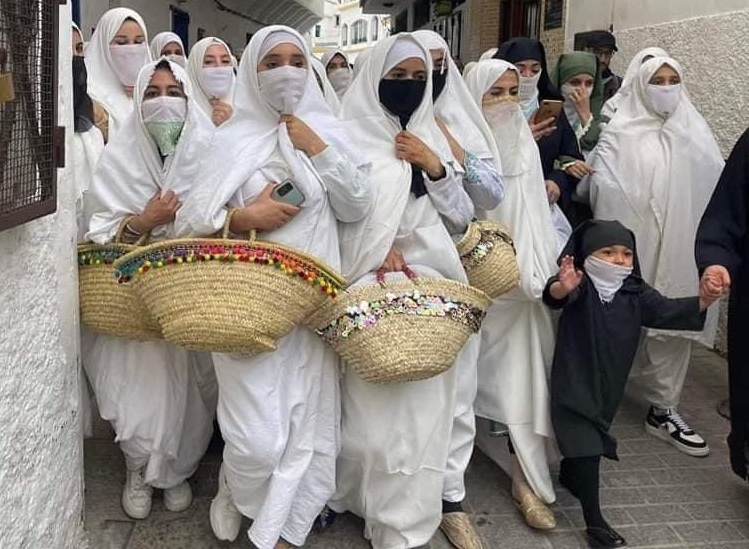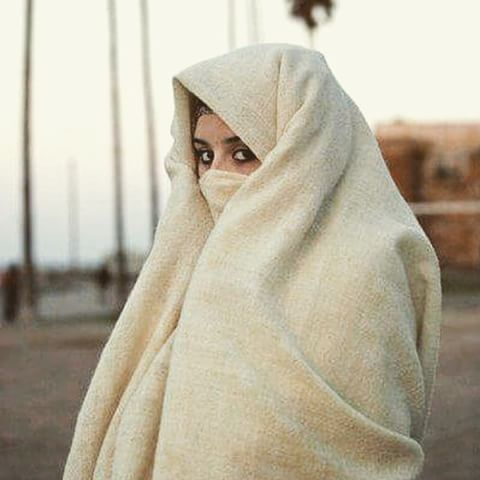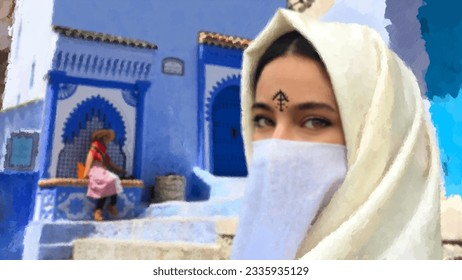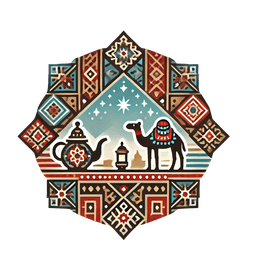- Published on
The Alluring Moroccan Haik Unraveling Morocco's Traditional Veil
- Authors

- Name
- Adil ABBADI
Introduction
In Morocco, the intersection of tradition and fashion is exemplified in the Moroccan Haik, a traditional veil that has been an integral part of Moroccan culture for centuries. This simple yet elegant piece of cloth has become a staple in Moroccan fashion, and its allure extends beyond the country's borders. In this blog post, we will explore the rich history, cultural significance, and enduring appeal of the Moroccan Haik.
- What is the Haik Marocain?
- A Brief History of the Haik Marocain
- Types of Haik Marocain
- The Cultural Significance of the Haik Marocain
- How to Wear the Haik Marocain
- The Haik Marocain in Modern Fashion
- Conclusion
- Embracing Tradition
What is the Haik Marocain?
The Moroccan Haik is a rectangular piece of fabric, typically made of cotton or linen, worn by Moroccan women as a veil to cover their head and shoulders. It is usually white, cream, or beige in color and is often intricately decorated with patterns, such as stripes or florals. The 'haik' is a versatile garment that can be wrapped in various ways, allowing women to create different styles and looks.

A Brief History of the Haik Marocain
The origins of the Moroccan Haik date back to the 19th century, when Moroccan women began wearing the veil as a symbol of modesty and piety. During this time, the 'haik' was mainly worn by wealthy women, who could afford the expensive fabrics and intricate embroidery that adorned the garment. Over time, the 'haik' became a staple in Moroccan fashion, and its popularity spread throughout the country.
Types of Haik Marocain
There are several types of Moroccan Haik that vary in terms of fabric, pattern, and style. Some of the most common types include:
- Traditional Haik: Made of white or cream-colored cotton fabric, this type of 'haik' is adorned with intricate patterns and embroidery.
- Fessi Haik: Originating from the city of Fez, this type of 'haik' is made of lightweight silk fabric and is often decorated with delicate patterns.
- Tétouani Haik: Hailing from the city of Tétouan, this type of 'haik' is made of vibrant fabrics and is known for its bold patterns.

The Cultural Significance of the Haik Marocain
The Moroccan Haik holds significant cultural and symbolic meaning in Moroccan society. It is seen as a symbol of modesty, piety, and respect for tradition. In Morocco, women often wear the 'haik' as a way to show respect for their faith, their family, and their community. The 'haik' is also seen as a way to maintain social cohesion and promote social harmony.
How to Wear the Haik Marocain
Wearing the Moroccan Haik requires skill and elegance. Here are a few tips on how to wear the 'haik':
- The Classic Wrap: Wrap the 'haik' around your head, covering your hair and shoulders.
- The Effortless Drape: Drape the 'haik' over your shoulders, allowing the fabric to flow elegantly.
- The Headscarf: Wear the 'haik' as a headscarf, tying it at the back of your head.
The Haik Marocain in Modern Fashion
The Moroccan Haik has made a significant impact on modern fashion, inspiring designers to create garments that fuse tradition with modern style. Many Moroccan designers have incorporated the 'haik' into their designs, creating stunning garments that showcase the garment's versatility.

Conclusion
The Moroccan Haik is a timeless and elegant garment that represents the intersection of tradition and fashion in Morocco. Its rich history, cultural significance, and enduring appeal have made it an integral part of Moroccan culture and fashion. Whether worn as a symbol of modesty, a fashion statement, or a way to connect with one's heritage, the Moroccan Haik is a garment that continues to captivate and inspire people around the world.
Embracing Tradition
In conclusion, the Moroccan Haik is a garment that embodies the spirit of Moroccan culture and fashion. Its unique blend of tradition and elegance makes it a timeless piece that transcends generations and cultures. By embracing the Moroccan Haik, we can connect with our heritage, appreciate the beauty of traditional fashion, and celebrate the richness of Moroccan culture.
